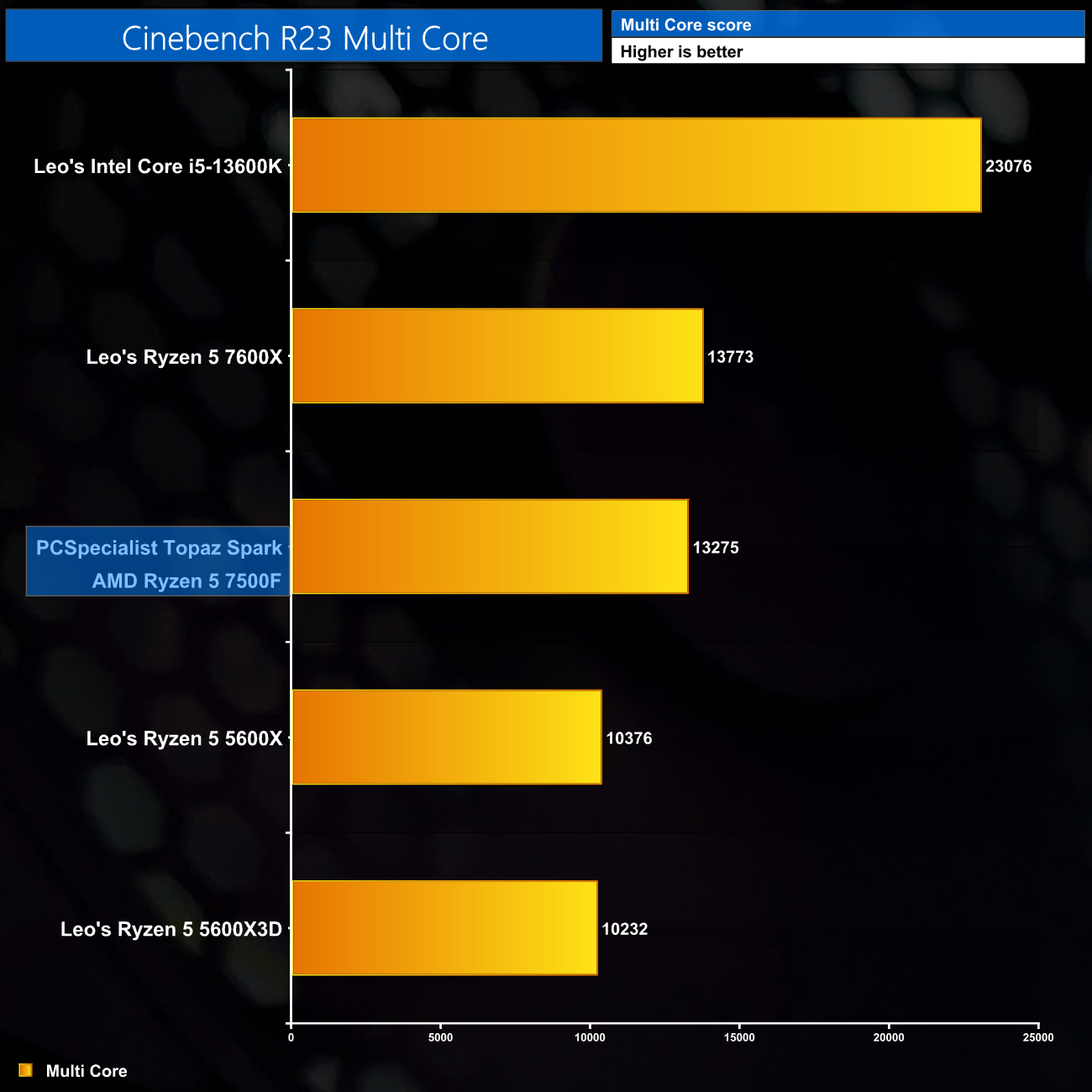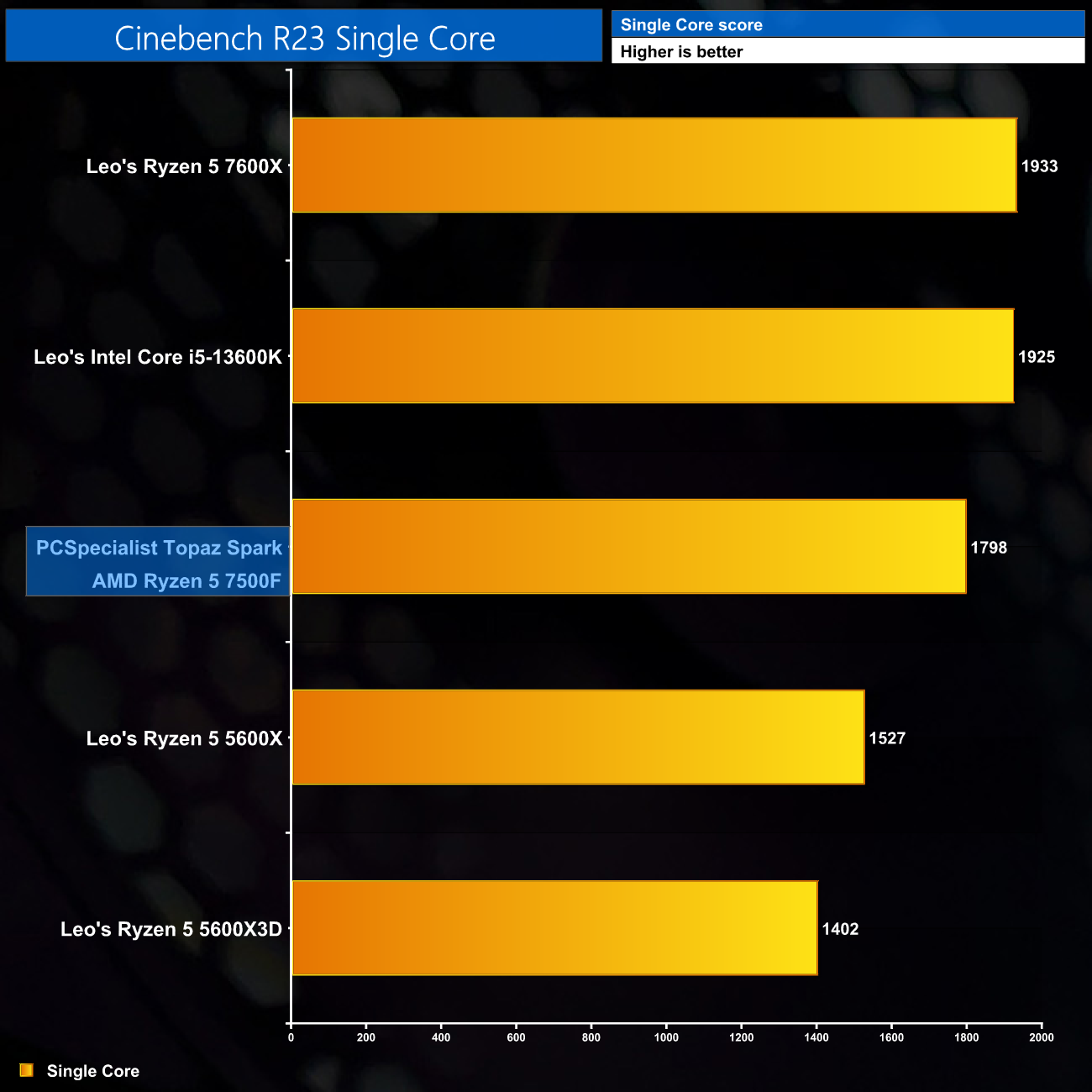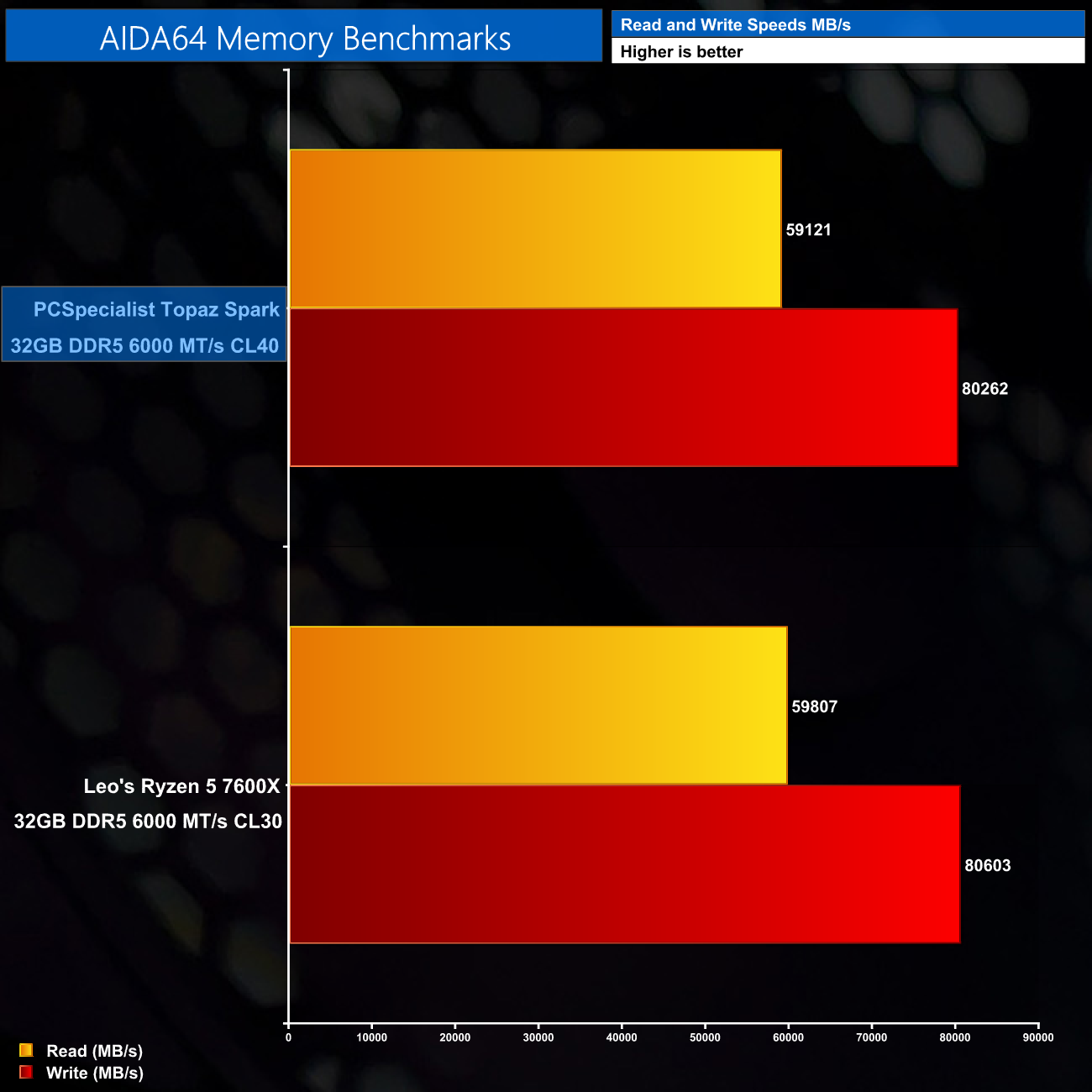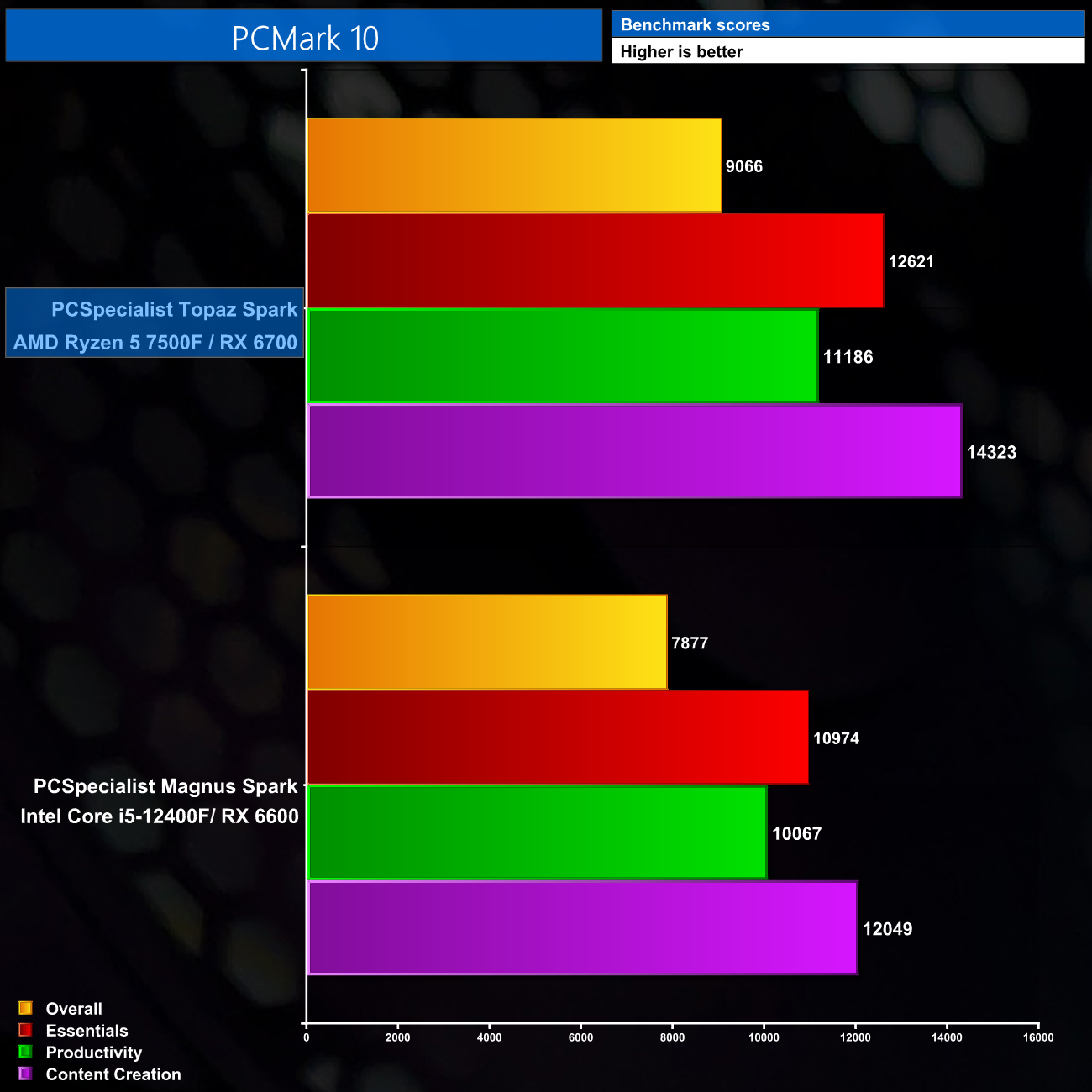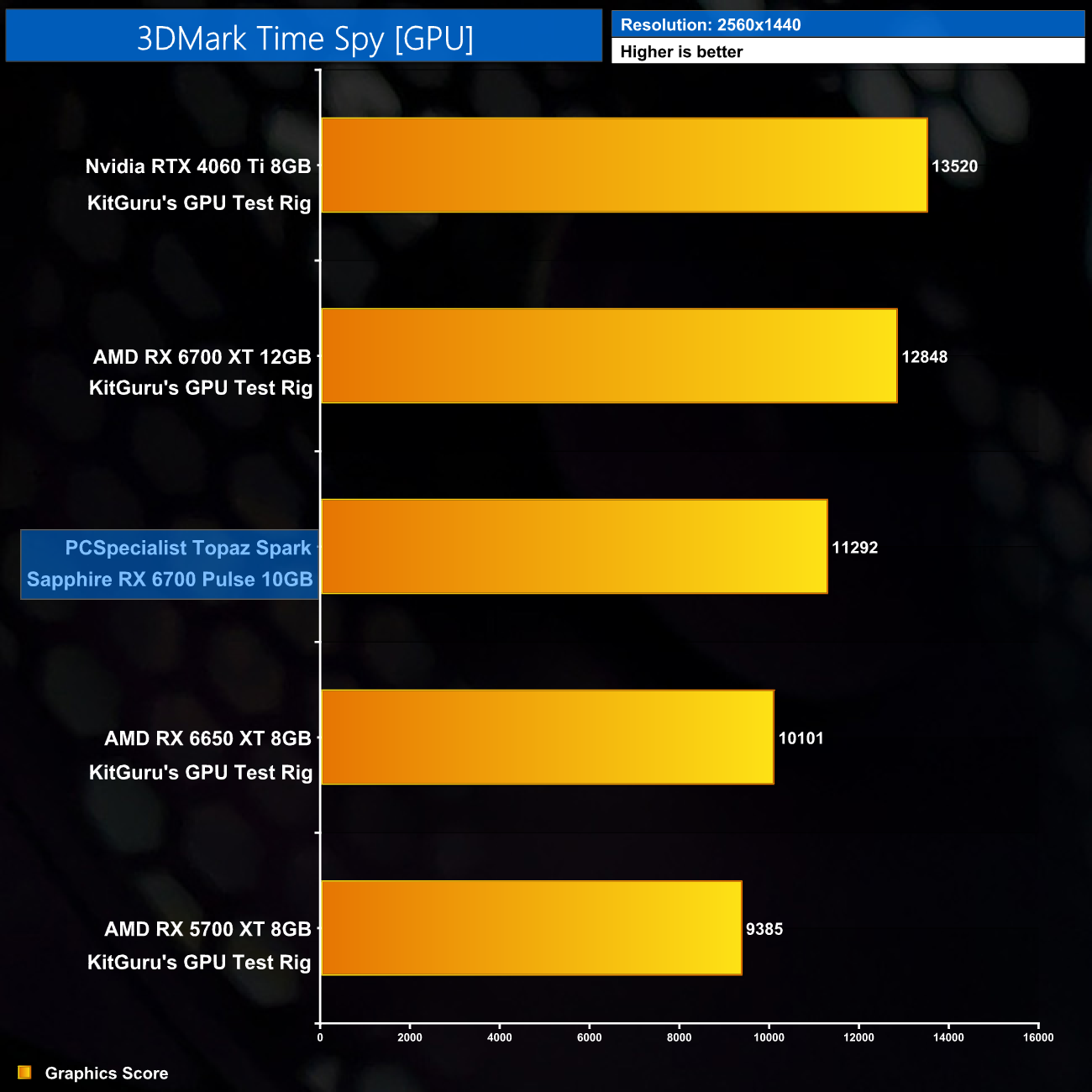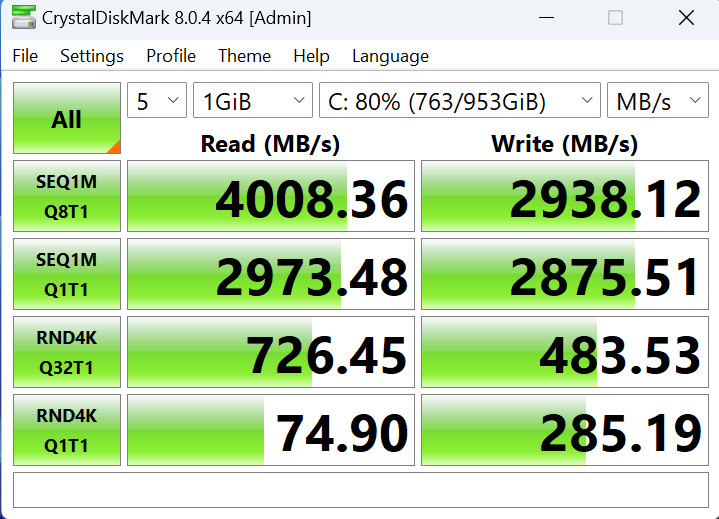Starting our benchmarks with Cinebench Multi Core, despite a clock speed deficit, the Ryzen 5 7500F is performing very similarly to the Ryzen 5 7600X that Leo tested as part of our Ryzen 5 5600X3D review. That's a very good thing for the Topaz Spark though, everything is functioning as it should and we're getting six Zen4 cores to crunch through the workload.
The Single Core result does drop back slightly which makes sense as the 7500F runs about 300MHz slower than the 7600X, but it's still a clear upgrade from a Zen3 CPU like the 5600X.
As for memory bandwidth, the Corsair kit may not have particularly tight timings but its read and write scores are almost identical to the G.Skill kit Leo used with his Ryzen 5 7600X testing so we can have no complaints.
PCMark 10 is next and for this one I've compared the Topaz Spark to the Magnus Spark – another PCSpecialist unit I reviewed last year that was also priced at £999. It's good to see clear improvements across the board here, with a 15% increase to the Overall score, despite both systems being launched at the same price point.
As for the GPU and 3DMark Time Spy, the RX 6700 is about 1500 points below the RX 6700 XT, but it's comfortably faster than the RX 6650 XT and even further ahead of the RX 5700 XT, so it looks like a suitable option in this £999 PC.
The final component to look at is the SSD, and by modern standards it's not the fastest – we're talking reads of 4GB/s and writes below 3GB/s. It'll be more than adequate for gaming, but considering we're now in the age of Gen5 SSDs, this is probably the most obvious corner that's been cut to hit the price-point.
 KitGuru KitGuru.net – Tech News | Hardware News | Hardware Reviews | IOS | Mobile | Gaming | Graphics Cards
KitGuru KitGuru.net – Tech News | Hardware News | Hardware Reviews | IOS | Mobile | Gaming | Graphics Cards


